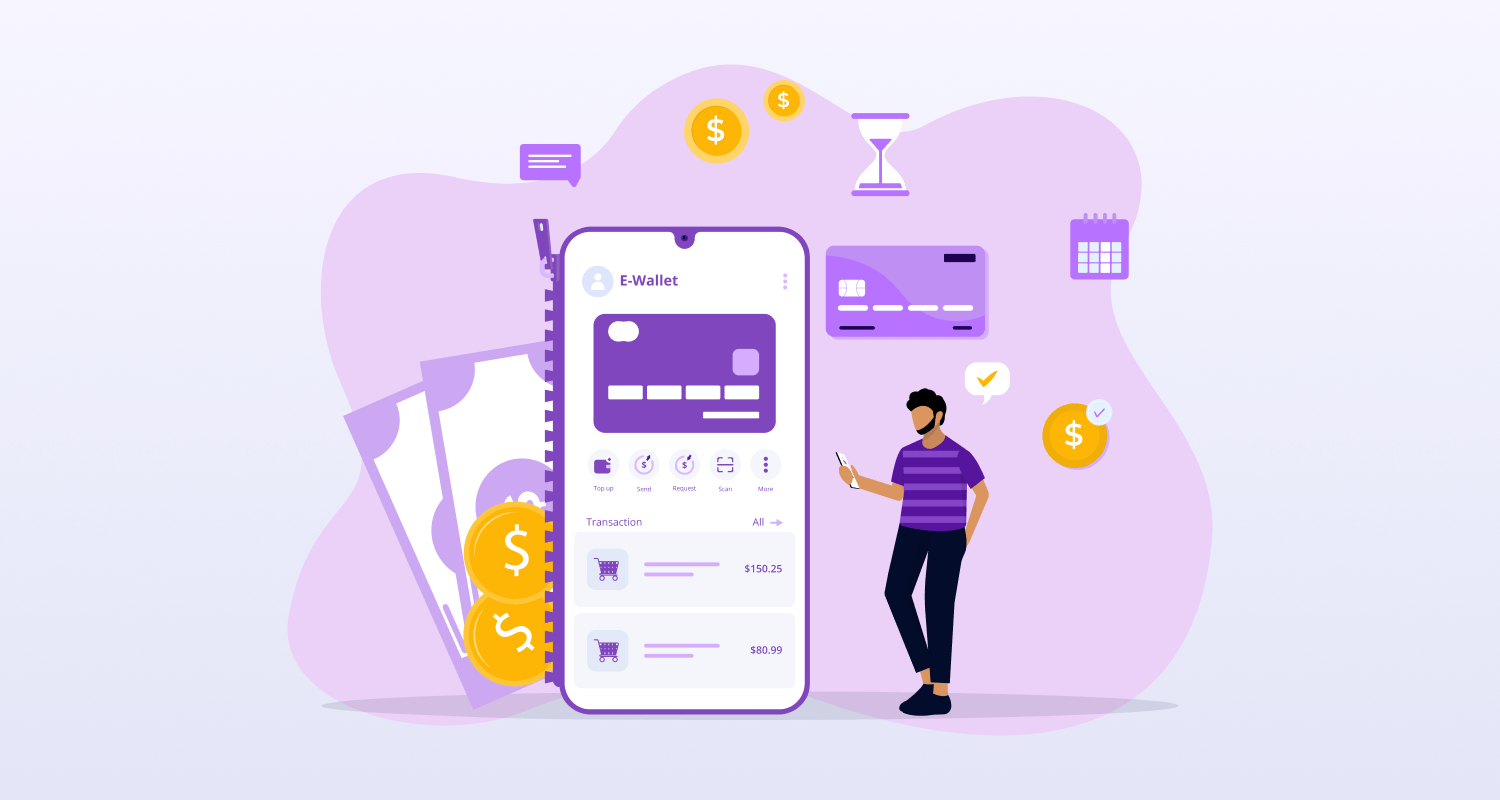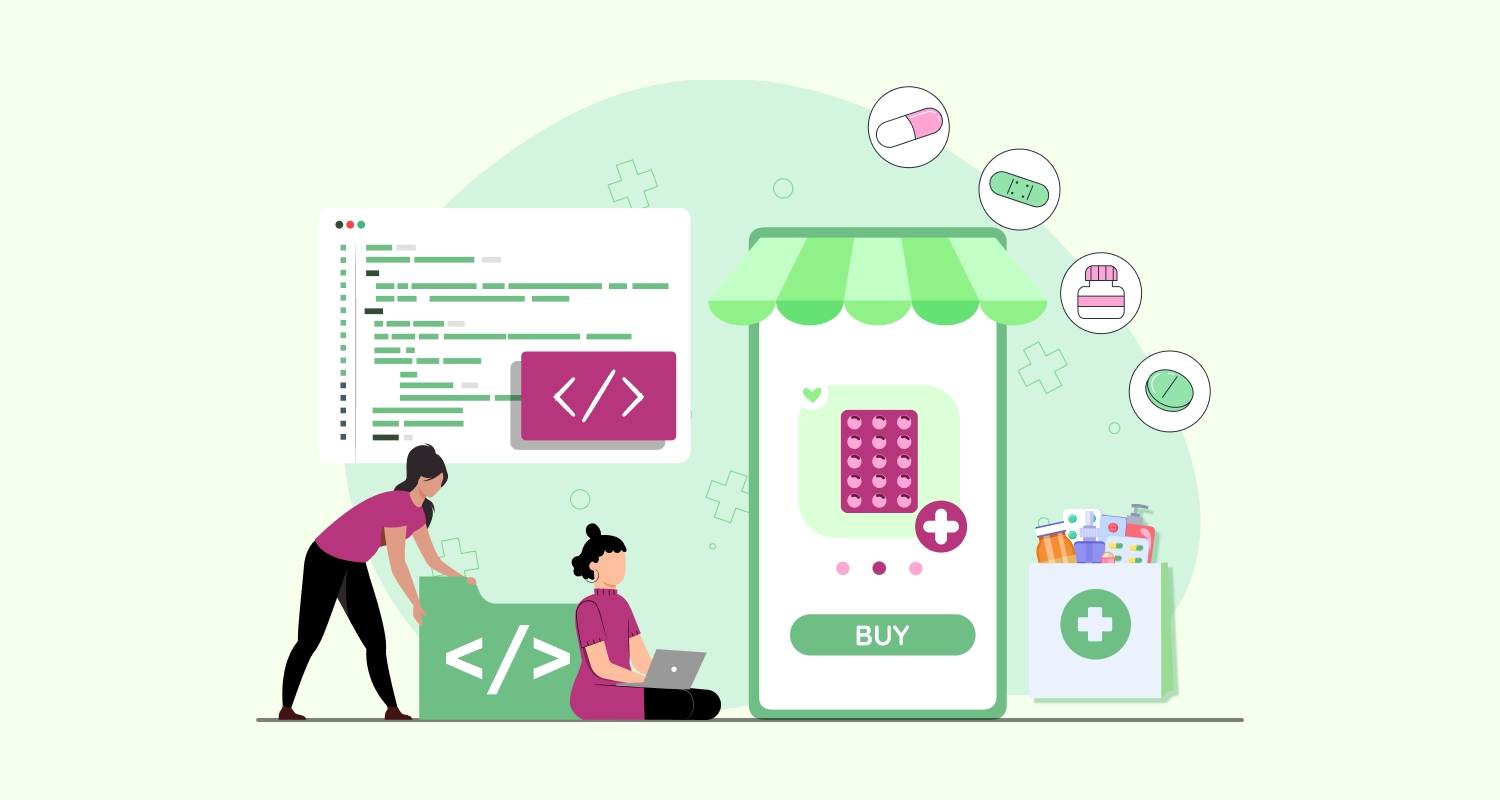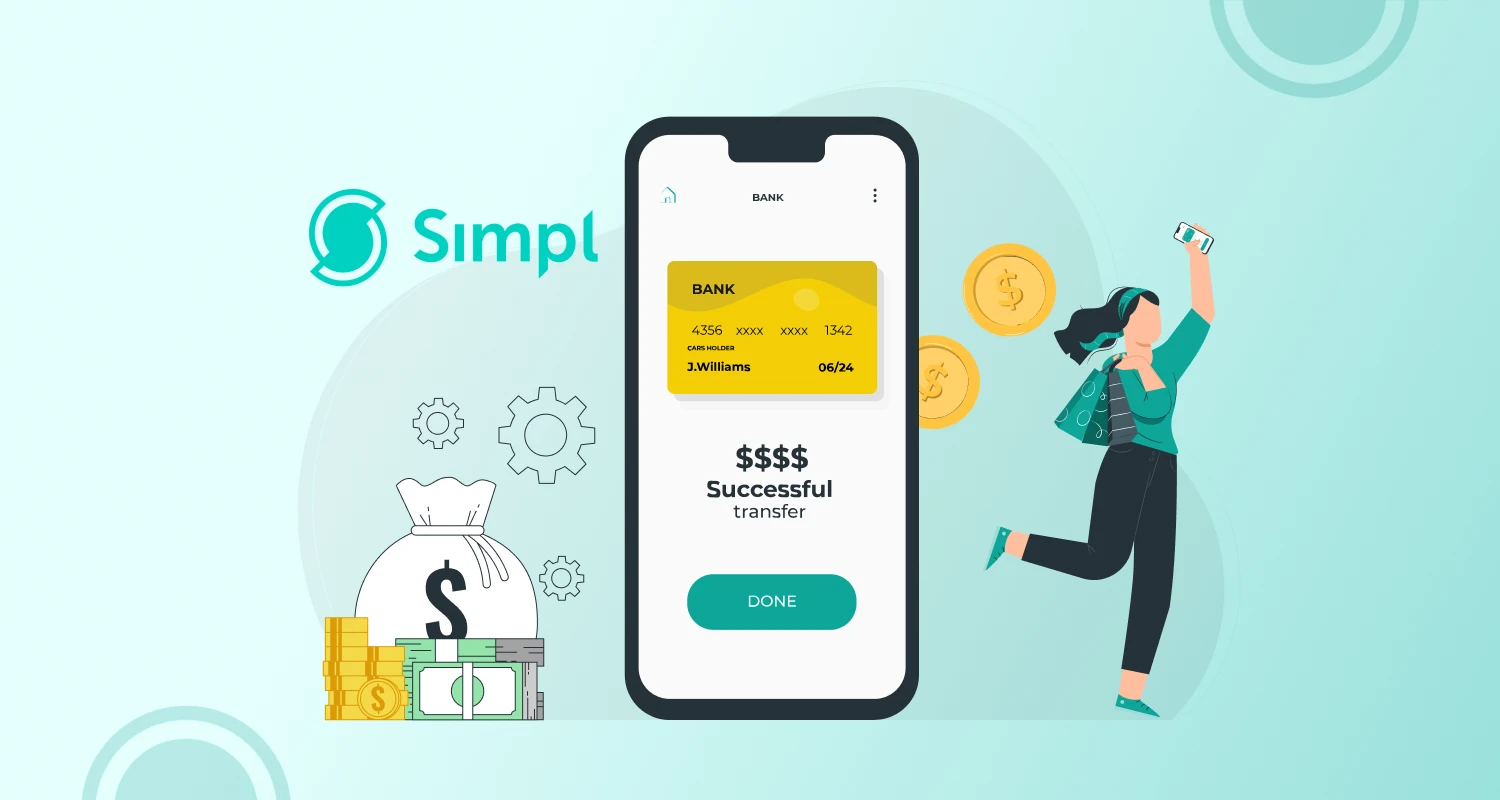The industrial hype surrounding 5G technology and its influence on the next generation of connectivity and services is exciting, and this enthusiasm is shared not only by users but also by developers, tech-driven organizations, and carriers. A GSMA study from earlier this year anticipated that by 2025, 5G networks will be used by 1.4 billion devices, representing 15% of the worldwide mobile market. The launch of 5G networks will not only transform the way individuals use smartphone applications, but it will also open up new doors for the mobile app development business. In the future, 5G will provide developers the freedom to experiment, create new platforms, and produce apps that will provide users with quicker, more customized experiences.
In this piece, we’ll go deep into how 5G’s advantages can improve the performance of already-existing mobile apps, as well as how they can affect and shape the creation of new mobile software.
Introduction to 5G
With connectivity rates that can reach about 10 gigabits per second, 5G networks promise to expand mobile connectivity and enhance the smartphone experience for users. In comparison to current wireless technologies, that is ten times faster. The way individuals communicate will radically change as a result of high-speed data transfer. However, there are other factors that will open up new opportunities for mobile app developers in terms of how apps are created.
With this innovation, users can count on consistently fast and reliable wireless internet wherever they go. By enabling faster downloads, it makes it easier and faster to transfer big volumes of data. The 5G network will change users’ opinions about smartphones and mobile applications. A turning point in the age of digitization is 5G. The arrival of 5G technology will usher in the golden age of cellular technology. By enabling smartphones to connect to networks more quickly, 5G technology is expected to enhance user experience.
The Evolution of Cellular Technologies
Here’s a quick rundown of the cellular technologies that came before 5G in order to better understand how it will affect cellular networks:

1G
Nippon Telegraph & Telephone first made 1G available to Tokyo residents in 1979. In 1984, the entire nation of Japan had access to a 1G network, making it the first nation to do so.
Ameritech did not launch 1G in the US until March 6 of that year. Coverage was expanded to include Canada by the mid-1980s.Call quality on his cellular network was terrible, and users could only exchange data at a rate of 2.4 Kbps when on the phone.
Standard: AMPS, TACS
Technology: Analog
2G
Success with 1G prompted the introduction of 2G on the GSM network in Finland in 1991.
2G brought quite considerable improvements in mobile communication, including encrypted calls (nobody could drop in on your unwanted anymore). 2G also enhanced sound quality by decreasing static and cracking sounds during conversations. With an average download speed of roughly 0.2 Mbps during the course of its existence, 2G was also noticeably quicker than 1G (albeit it was still terribly slow by today’s standards).
During the 2G era, “candy bar phones” also gained popularity, with Nokia taking the lead in the production of well-liked telephones like the Nokia 3210.
Standard AMP,GSM, GPRS, EDGE
Technology: DIGITAL
Bandwidth: Narrow Band
Data Rates: < 80- 100 Kbit/s
3G
NTT DoCoMo introduced 3G in Japan in 2001 with a focus on standardizing vendor network protocols. In turn, this enabled customers to access data from any location, hence launching worldwide roaming services.
When compared to 2G, 3G had four times the capacity for data transfer, with typical speeds of up to 2 Mbps. This growth led to the actualization of video streaming, videoconferencing, and live stream chat.
4G
4G was first made available to the public in Norway before the end of 2009 and has since become the industry standard.
4G offered HD video streaming and chat, quick mobile web access, HD videos, and online gaming, starting at a minimum of 12.5 Mbps. Mobile devices required specialized design in order to enable 4G, as opposed to a straightforward SIM card changeover from 2G to 3G.
However, 4G wasn’t exactly 4G when it originally began. The minimum 4G speeds specified by the ITU-R (12.5 Mbps) were unreachable at the time. The ITU-R determined that LTE (Long-term evolution) may be referred to as 4G due to the amount of money that IT companies were investing in accomplishing this aim. But only if it offered a noticeable upgrade over 3G.
5G
How will 5G technology change things?
Technology is developing quickly, but smart minds are working hard to improve it, develop new applications, and change the ones that already exist. In such a scenario, 5G is a game-changing development. It enables quicker downloads for tech specialists and makes it simple and quick to transfer millions of pieces of data.
The arrival of the 5G network will alter how people use their smartphones and mobile applications. The 5G network offers mobile app developers a number of opportunities in addition to high-speed data transfer.
Let’s examine this new technology’s functioning to help you comprehend what makes it so special. The three different spectrum bands that 5G will use are as follows:
- High Band Spectrum: The primary factor in 5G’s impressive performance is the high band spectrum. It offers the fastest speeds, up to 10 GBPS. The major problem of this spectrum, however, is the limited coverage it provides inside buildings.
- Mid-Band Spectrum: is located halfway between the high-band and low-band spectrums. Compared to the low band spectrum, it moves quickly, yet it doesn’t pass walls very well. Its top speed limit can go as high as 1 Gbps.
- Low-Band Spectrum: In the US, connection providers primarily use this frequency. It has amazing wall penetration and also covers a lot of ground. An alternative name for the 1GHz band is this spectrum.
5G’s brand-new network design is setting the stage for the future of communications. By providing seamless connected experiences that are superior to fixed internet, the technology is poised to disrupt numerous sectors.
It makes sense that mobile app developers would have to work extra hard to support this cutting-edge technology. Don’t worry if you’re not sure where to begin. We outlined the key aspects of 5G that have an impact on the creation of mobile applications.
5G is completely different and has a new communication architecture that offers its users improved services.
You May Also Like: How Much Does It Cost to Make an App?
The Most Noteworthy Features of 5G Technology are:
Reduced Latency
Users of mobile devices worry about delays, especially when they use these devices and their networks to make important decisions in real time. The typical latency of current 4G networks is 50 milliseconds, whereas the latency of 5G networks will be merely one millisecond, resulting in reduced network interference and delays.
Improved Network Density
The ability of a network to enable the successful transmission of many messages, even in a densely populated location, is referred to as connection density. As the average number of connected devices per user is anticipated to rise (e.g., smartwatches, smartphones), the number of devices 4G can serve concurrently will become more insufficient. Currently, 4G networks can only support about 2,000 connected devices per 0.38 square miles. With the ability to accommodate up to 1 million linked devices in the same area, 5G addresses this shortcoming.
Increased Speed
If a customer has access to 5G, they can download an app of any size in only a few seconds. In addition to the quick app download speeds, 5G offers a number of advantages to smartphone app developers that rely on in-app purchases and other monetization strategies to generate revenue from their apps. Mobile app engagement will increase as a result of 5G networks’ ability to improve streaming speeds for entertainment apps.
Extended Battery Life
Less power use is more likely with decreased latency and improved speed. Additionally, 5G doubles the battery life of smartphones and other IoT devices. As a result, consumers can use their phones for longer.
Future Advances
High bandwidth, almost low latency, and increased connection density, which are unique to 5G technology, have created new possibilities that were unimaginable for 4G. For illustration:
- AR/VR cloud
- IoT for industry
- Smart Car Technology
- Virtual Machinery Control
- Smart Cities
- Wireless eHealth
Improved Bandwidth
In order to provide improved connection, 5G is built to operate over a variety of frequencies. All spectrum bands, including the Low band (below 1 GHz) used by LTE, the Mid band (1 GHz to 6 GHz), and the High band using millimeter waves, will be well-suited for the mobile applications (mmWave).
The most recent radio technology, 5G, uses high radio frequencies and short wavelengths (30GHz to 300 GHz). As a result, it will provide GPS-enabled devices with more precision than 4G.
But how will this advancement in telecommunications affect the way that agile apps are developed?
This leads us to the following section:
5G’s Impact on Mobile Application Development
Implementing IOT seamlessly
5G will make IoT more useful by making it easier to make apps for different kinds of connected devices. The applications will enable smooth interoperability between smart devices, wearable technology, and sensor-based machinery.
They will be able to operate at peak efficiency while consuming less power and bandwidth. Artificial intelligence (AI) and machine learning (ML) can be used by developers in tandem with 5G’s speed and power to provide ambient computing within apps, thereby increasing their efficacy.
As the use of linked devices becomes more widespread, it will promote a better and more seamless user experience. In a word, businesses have the chance to boost earnings by using dependable technology like 5G on mobile apps.
Enhanced Video Streaming
Applications running on 5G are expected to offer multimedia-rich user experiences. By enabling high-resolution live streaming at a faster rate, the technology will revolutionize video streaming.
The efficiency of video app performance will be improved by lower latency. A lengthy battery life will provide a continuous viewing experience. High-performing 4K videos can be incorporated by developers to highlight goods and services in the app. Users benefit just as much as developers do.
Additional Opportunities for AR and VR Integration
Due to network difficulties, developers have not been able to widely incorporate AR and VR into their mobile applications. The data transfer efficiency and speed promised by 5G will enable the development of an enhanced user experience.
These apps will run smoothly because 5G gives them the ability to get beyond latency and bandwidth issues.
They will be able to handle larger amounts of data at much faster rates, resulting in more interactive and captivating experiences.
AR and VR technologies can significantly alter how consumers shop by enabling them to make adjustments and develop a product that is perfectly in line with their preferences and requirements – all from their hand-held gadgets. This can happen in a variety of industries, from online shopping and retail to automobiles and athletic wear. Consider 5G app development with integration for AR and VR in the near future. Prospects for a healthy profit margin seem promising.
Advent of Immersive Technology
Mobile app development based on immersive 3D and AR could benefit from 5G. These applications will revolutionize the field of mobile app development. They will be helpful in providing 3D features for a variety of industries, including immersive gaming and 3D printing.
These future-proof software programmes will have many practical uses in fields ranging from construction to medicine. The need for 5g software development is expected to skyrocket in the near future.
Improvements to GPS Performance
The accuracy of information distribution will improve with GPS-based mobile app development. The 5G network’s increased speed and improved connectivity will assure real-time accuracy of findings, enhancing the functionality of navigational applications.
The automobile sector will benefit from these apps. They will increase how effectively autonomous vehicles operate. Wearables and other portable devices can also benefit from their assistance in providing enhanced connectivity.
Enhancement to the UX of the app
An app’s load time will be reduced by the enhanced connectivity provided by 5G, increasing its responsiveness. By giving the app better performance and visual clarity, this would dramatically improve user experience. While improving UX, developers will be able to add more features to the mobile app.

Improved Cloud Compatibility
5G technology facilitates one essential feature: scalability. File transfers to the cloud will be quicker and simpler because of the extraordinarily high transmission speeds. As a result, this will promote the move of data and computing resources to the cloud.
In order to reduce users’ reliance on their hardware, mobile app developers will begin including cloud accessibility early in the design process. Because of the low latency and great throughput, users will have unhindered access to their cloud data.
Reduced Hardware Constraints and Continuous Connectivity
Hardware constraints won’t influence mobile apps with 5G support. The technology equips programmers to include components that support real-time networking and cloud-based services as well as tailored interactions.
With 5G’s improved network stability and reduced power consumption, fewer devices will unexpectedly drop out of communication. Businesses can take use of this persistent connectivity for their mobile apps, giving app users access to increasingly sophisticated forms of ambient networking.
Smart city applications
The deployment of 5G will extend beyond the Internet of Things. In fact, it will make it possible to build “smart cities” with countless numbers of sensors and connected gadgets.
Smart cities, on the other hand, will present a distinctive platform for business development where numerous mobile apps will be synchronized to do things like stop crime, lessen pollution, and create real-time emergency alerts.
A new kind of partnership prospects for both competitive and non-competing businesses will result from this.
Takeaway!
Although it will take some time before users, developers, and companies can fully take use of 5G’s benefits, the technology will be significant in assisting developers in meeting changing customer needs.The demand for 5G app developers is soon going to increase. As mobile apps evolve further, 4G technology will be unable to handle the enormous volumes of data generated. In reality, numerous studies reveal that network speeds significantly vary during the day depending on how many people are connected, indicating that 4G is already beginning to show signs of being overloaded. If you now rely on this connectivity, it might be worthwhile to look into your 5G technology possibilities.
Only 5G, with its promise of faster data transfer rates, less latency, and improved connection density, will be able to accommodate the next generation of mobile applications and give users a richer user experience. Businesses should see higher user retention rates and app income as a result in the upcoming years. As the rollout of 5G networks picks up speed, a new market will emerge for all the hardware, software, and hardware accessories required to support the data-heavy atmosphere of 5G networks. To sum up, improving user experiences will eventually result in improved user retention rates and app income.
Have you truly enjoyed reading the thoughts on how 5G can change the app development segment? Do you want to develop a better-functioning app that makes the most of 5G technology? Get a 5G mobile application that works perfectly by hiring mobile app developers from CMARIX.
Frequently Asked Questions
How will 5G services benefit users?
Users will be able to access cutting-edge technologies like IoT, UltraHD films, cloud computing, augmented reality, virtual reality, and more through mobile apps powered by 5G.
What if I want to create a mobile application that is 5G compatible?
Inform us of your needs for developing mobile apps that are 5G compatible. We have expertise creating mobile apps for consultancy, restaurants, food delivery, social media, travel, etc. Once we have the information we need from you, our specialists will get in touch with you to launch your new website. We will provide you with the finest possible advice from our IT team.
What is the verdict on 5G technology’s verdict?
With 5G, we can link 100 billion devices simultaneously. It will provide a consistent experience in a variety of situations, including mobility, high connection density, and extremely high traffic volume density.







